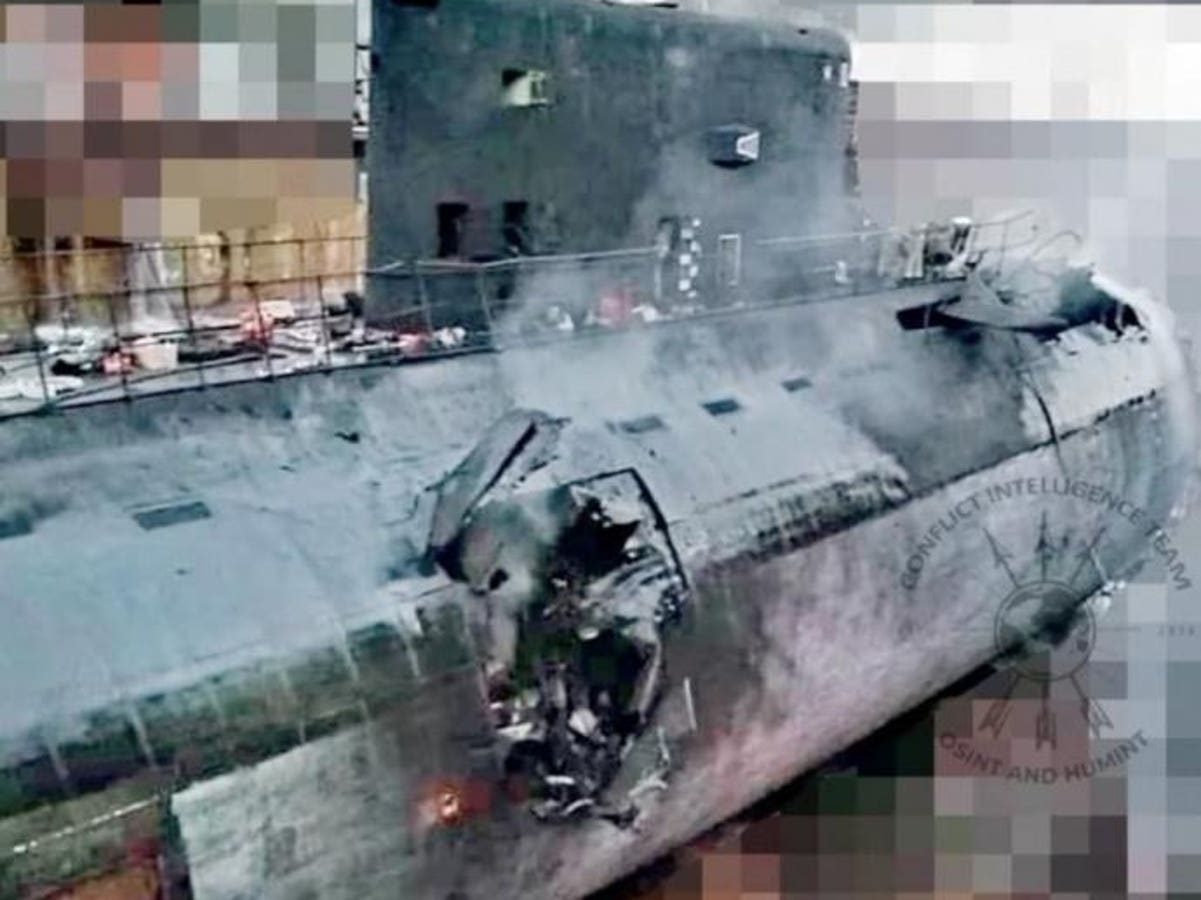Rostov-on-Don, a Russian Kilo-class diesel-electric submarine belonging to the Russian navy’s Black Sea Fleet, is so unlucky that she got blown up not once, but reportedly twice. Both times, it seems, by Ukrainian cruise missiles.
On or just before Saturday, the 10-year-old Rostov-on-Don was in the port of Sevastopol, in Russian-occupied Crimea, when a Ukrainian missile apparently streaked in. “As a result of the attack, the submarine sank,” the Ukrainian defense ministry claimed.
“Great work, warriors,” the ministry added. “The Black Sea fish will enjoy their new home.”
Satellite imagery of Sevastopol in the aftermath of the purported attack is tantalizing but inconclusive. It may depict damage from the missile strike; it may not.
If better imagery or other evidence confirms the sinking, it will represent a deeply embarrassing loss for the battered Black Sea Fleet. With its three dozen large warships, the fleet massively outweighed the tiny Ukrainian fleet in the early days of Russia’s wider war on Ukraine 29 months ago.
But even after its last few big ships sank to the bottom of the Black Sea, the Ukrainian navy kept fighting, often coordinating its attacks with the Ukrainian air force.
Striking with drone boats and cruise missiles, the Ukrainians destroyed or damaged a third of the Russians’ ships—including their flagship, the missile cruiser Moskva, sunk by a pair of Ukrainian missiles in April 2022.
Rostov-on-Don was a recent victim. On Sept. 13, a Ukrainian air force Sukhoi Su-24 bomber fired what were probably British-made Storm Shadow cruise missiles at Sevastopol, striking Rostov-on-Don and a neighboring amphibious ship while the two vessels were in drydock for maintenance.
The missile that hit Rostov-on-Don didn’t just damage the 240-foot, 3,100-ton vessel. No, the missile’s two-part tandem warhead first punched a hole in the submarine and then exploded inside. Photos from the aftermath of the raid revealed extensive internal and external damage.
Incredibly, the Russians kept working on Rostov-on-Don, clearly determined to return the devastated vessel to front-line service. Work continued even as the rest of the Black Sea Fleet retreated from the increasingly vulnerable Crimean ports and redeployed to ports in southern Russia.
By this summer, the Kilo-class submarine was all but alone in Sevastopol. Her hull patched up, she reportedly left drydock in June for tentative trials in the harbor.
These trials may have been ongoing when the Ukrainians targeted Rostov-on-Don a second time—perhaps with another Storm Shadow, or possibly with a similar French-made SCALP-EG missile or a locally-made Neptune missile.
The defense ministry in Kyiv expressed confidence in the results. “A Russian submarine went to the bottom of the Black Sea,” it announced. The rest of us should await hard evidence that Rostov-on-Don suffered the extreme embarrassment of getting blown up twice in 11 months.
Read the full article here





